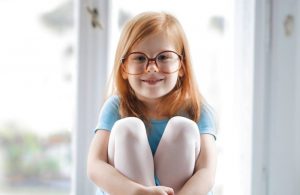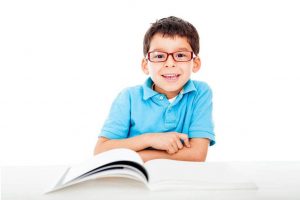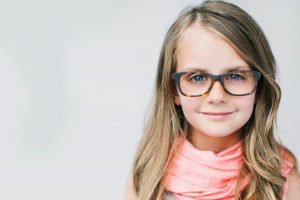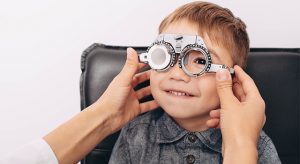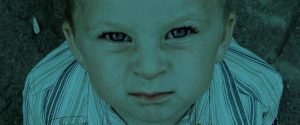Your eye doctor may have prescribed multifocal lenses for your child— but aren’t these lenses only for adults?
What are multifocal lenses?
Multifocal lenses, which many associate with reading glasses, contain varying optical prescriptions throughout the single lens. While these lenses are generally prescribed for adults who have blurry near vision, and complain of reading difficulties due to lack of vision clarity, eye doctors are also prescribing these lenses for children.
Multifocal lenses are similar to bifocals in the sense that they contain more than one optical prescription. The main difference between these two types of lenses lies in their appearance and number of optical powers within the lens design.
Schedule an appointment with an eye doctor near you to find out if multifocal lenses are a good fit for you.
Bifocals or Multifocals?
Bifocals contain only two different lens powers, that allow for improved focusing for distance vision and reading. These lenses usually have a bisecting line or a noticeable segment on the lens indicating where the different lens powers are situated.
Multifocals contain many lens powers, that allow for clear vision for distance, reading, computer use, and other objects placed at an intermediate distance. Unlike bifocals, these lenses are designed to combine lens powers without a visible line.
Why do children prefer multifocals?
Many parents and children favor multifocal lenses over bifocal lenses because the casual blend of powers within the lens limits “image jumps” which can occur when looking from one lens power to the next.
Children generally prefer multifocal lenses for aesthetic reasons— a lens without a bisecting line is more attractive and stylish.
Children also find multifocal lenses are easy to use and quick to adapt to. Multifocal lenses are designed according to their lens powers— the higher the powers, the ‘harder’ the lens design, the lower the powers, the ‘softer’ the lens design. Children generally require lower powers (+0.50 to +1.25), as compared to adults (+1.50 to +4.00), and therefore the majority of children find their multifocal lenses to be easy to use and with very fast adaptation.
When are multifocal lenses prescribed?
Multifocal lenses are generally prescribed for two reasons:
- To support focusing difficulties
- To reduce myopia progression
1. Focusing Difficulties
Children who have difficulty seeing near objects and images clearly tend to present with focusing difficulties. Focusing skills are necessary to enable a child to see with clear vision acuity over an extended period of time —such as reading, homework, computer use, etc.
Multifocal lenses are prescribed to support a child’s focusing skills — reducing their eye strain and preventing fatigue.
It is important for children to wear their multifocal lenses for all near vision tasks and activities— especially at school and for homework. Children may not be required for long term use as some children may only require the extra support until they develop stronger control of their focusing system. Other children will continue to require the additional support for near vision for as long as they are in school.
Your eye doctor will advise when your child needs to wear these glasses and for how long.
2. Myopia Management
Multifocal lenses have been proven to reduce the progression of myopia (nearsightedness) in children.
According to recent research, multifocal lenses reduce the rate of a child’s eye growth (axial length), a known cause of myopia progression.
For Myopia Management, multifocal contact lenses seem to be more effective than bifocals, and equally as effective as ortho-k contact lenses. Multifocal contacts are designed in a similar manner to Ortho-K lenses, with ‘center-distance lenses’, where the center of the lens provides distance vision acuity, and the peripheral areas of the lens provide near distance acuity. These contact lenses are designed similarly to Ortho-K lenses.
Schedule an appointment with an eye doctor to help manage your myopia.
SEE RELATED: Choosing Glasses for Children
Multifocal lenses v single vision lenses
Eye doctors typically prescribe single vision eyeglasses or contact lenses for children with myopia, these curved lenses refocus light onto the retina of the eye, thereby correcting nearsightedness.
As opposed to a single vision lens, a multifocal lens contains more than one focus point. It has been shown that children with myopia who are prescribed a multifocal lens, instead of a single vision lens, have reported a reduction in myopia progression.
A research study, conducted in Hong Kong including children 8-13 years old, with myopia between -1.00 and -5.00 diopters, compared children who wore multifocal lenses, to children who wore single vision lenses over two years. According to the results of this study, the children who wore multifocal lenses reported:
- 25 percent decrease in myopia progression
- 31 percent less axial elongation (eye growth)
Moreover, the reduction of myopia progression became more noticeable when the lenses were worn for five hours a day and further enhancement of these positive results was achieved when lenses were worn for seven hours or more per day.
Myopia typically develops between the ages of 8 and 16, and continues to worsen until the eye stops growing— typically by the time the child reaches 20 years. It is therefore important to begin Myopia Management as early as possible —the earlier a child begins, the higher their chance for optimal results.
Vision therapy
In some cases, if a child has a more significant focusing problem, or multiple vision problems, they may struggle with academic or sports performance.
For these children, a vision therapy program may be prescribed in conjunction with corrective eyewear. Vision therapy facilitates resolution of the underlying cause of visual problems, and strengthens the child’s visual skills, to enable clear and comfortable vision. A combination of eyeglasses and vision therapy is also effective in supporting the development of children with dyslexia or special needs.
LEARN MORE: Guide to Children’s Eye Exams
If your child is showing signs of a focusing difficulty, or has been diagnosed with myopia, discuss the benefits of a multifocal lens with an eye doctor near you.
Multifocal lenses have been shown to provide support for children who struggle with vision problems, and can be a great tool for improved visual clarity and comfort, at all distances.


